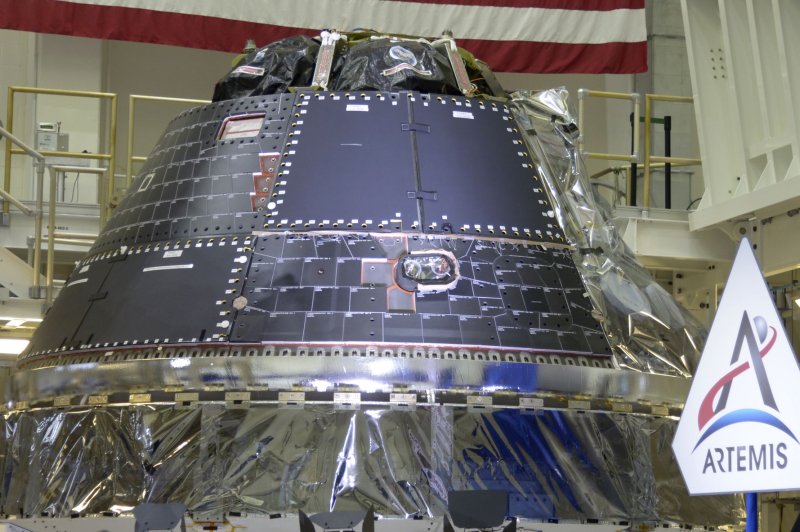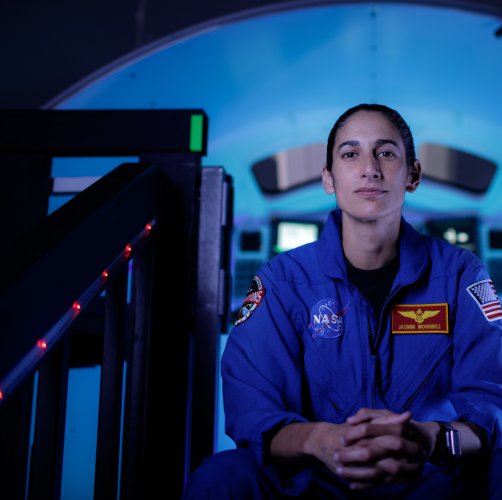1 of 3 | The Orion space capsule, which could be the first spacecraft to carry humans into deep space since 1972, is displayed at Kennedy Space Center in July 2019. File Photo by Joe Marino/UPI |
License Photo
ORLANDO, Fla., Oct. 16 (UPI) -- The anticipated return to deep space in 2024 for the first time in nearly 50 years brings a unique set of challenges that only one spacecraft on the planet currently can meet, officials with Lockheed Martin said at a global space event this week.
Life support and radiation shielding systems on NASA's Orion spacecraft, built by Lockheed, make it qualified for deep space missions -- those beyond low-Earth orbit where the International Space Station is situated, said Shelby Hopkins, senior systems engineer for Lockheed's Orion program.
"Deep Space has a really unique environment and is more dangerous than low-Earth orbit, so we have to consider things like increased radiation...it forces us to come up with innovative solutions," Hopkins said during an online panel Wednesday during the annual International Astronautical Congress.
NASA plans to send launch its Space Launch System rocket and Orion capsule in an uncrewed Artemis test flight from Florida to the moon in late 2021. The capsule for that flight was delivered in March to Kennedy Space Center in Florida, while the SLS rocket awaits further testing in Mississippi in November.
Astronauts are scheduled to fly to the moon's South Pole in 2024 inside Orion.
At least two private companies -- Elon Musk's SpaceX and Jeff Bezos' Blue Origin -- are building deep space exploration craft.
SpaceX has flown its test prototype Starship in very limited flights without human habitat to 500 feet high and plans a higher flight soon. Blue Origin hasn't announced test flights for its New Glenn rocket and Blue Moon lunar lander.
The Orion crew capsule has been to space already, without astronauts aboard. It was launched in December 2014 and splashed down about 4 1/2 hours later in the Pacific Ocean. During that test, Orion traveled twice through the Earth's radiation belts and reached an altitude of 3,600 miles.
"So our flight-proven hardware can help us more quickly build up a habitat, to live and work on the moon," Hopkins said. "It's motivating to me to think about all the incredible science that can be done on the moon in the exploration that could be possible."
Currently, Orion is designed for 21-day crewed journeys, he said.
"But this can be adjusted and Orion could support a mission of hundreds of days or even 1,000 days," Hopkins said. "We are keeping in mind that Artemis moon missions are meant to be a first step on the way to Mars."
We also have plans for upgrades and mission support packages to help advance the technology, as we move into the future," said Kerry Timmons, Lockheed's senior manager for Orion systems integration.
"We have come so far through the development stages of the Orion spacecraft. Now we have the hardware, engineers and suppliers with the experience and the products needed to start launching on a more regular basis," Timmons said.
Jasmin Moghbeli
Moghbeli poses for a portrait in the Systems Engineering Simulator for the International Space Station and advanced spaceflight programs at the Johnson Space Center on July 9, 2019. She will train for the moon mission. Photo by Bill Ingalls/NASA
















